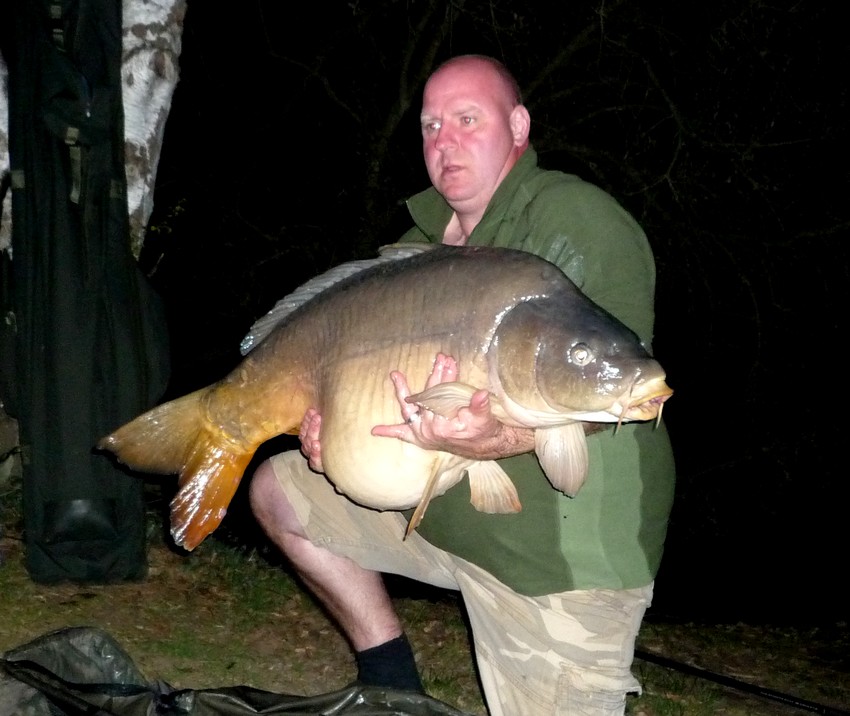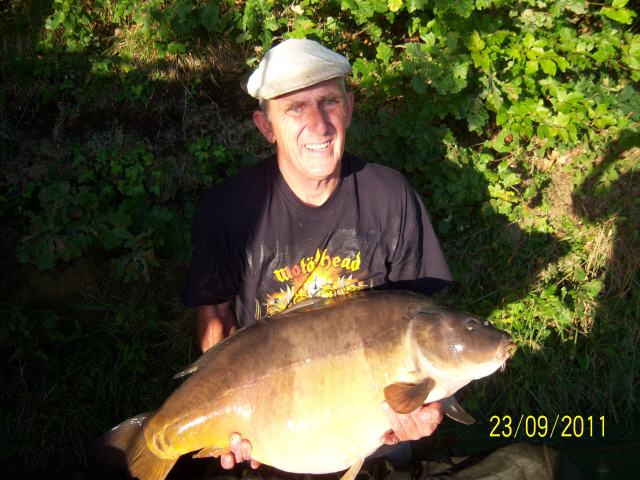
In my opinion when carp fishing, the most important factor after the hook is the lead set-up. I very much favour a heavy lead… & here are the reasons why;
Many anglers sit behind their rods and their non-moving swingers unaware that carp are actually mouthing, and sometimes moving off with, the baited hook length… or are backing off testing for leads. Because light leads (1oz or 2oz) are normally being used, the carp feel only a slight resistance, giving them the ability to discard the baited hook length. This results in single beeps and twitchy little takes, which may in turn lead to a 20lb’er on the bank, but not the larger thirties or forties.
Carp which are slightly pricked by the weight of the lead tend to stay on the spot, turning round and round looking for any available stick, rock or weed to wind the hook length, lead and mainline around to pull the hook out.
Fishing light leads also means the lines are slack. Anglers who retrieve their gear to rebait can often find an horrendous ‘birds’ nest’ of line, sometimes up to 2m-5m of line, wrapped around the hook length which occurs as a result of slack lines and carp making efforts to shed the hook. If the carp manage to snap the mainline, then they will drag this nest around with them. Anglers are puzzled and horrified to see this.
In addition to light leads and slack lines, completely slack bait runners and swingers or bobbins that are hanging completely loose will lead anglers to disregard the slight rise of swingers and a single beep because they do not think it signifies a take. A series of occasional beeps on a slack bait runner and bobbins could mean that a carp has been lightly pricked and possibly been on for a very long time, especially if the angler continues to ignore the beeps, and this inevitably leads to a ‘birds’ nest’ appearing with the fish when it is landed. If the carp sets the hook against an obstruction on the bottom, it can cause some of the worst mouth damage to fish to be seen.
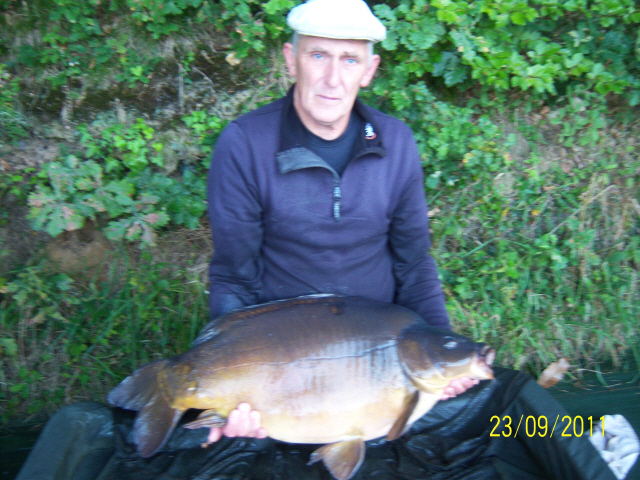
A concept which is not always appreciated by many anglers is that takes from the far bank can come backwards towards the angler, a “drop back”, which can result in their mainline snagging on any obstruction on the bottom. Although this
may set the hook, if it does and the mainline is snagged, the angler is often cut off. If the swingers are slack, the carp may move a considerable distance from the far bank and will, at some point, find some obstruction on the bottom on which to lose the hook. Invariably light bobbins or swingers do not pick up backdrops and heavier swingers just move the leads. I’ve also noticed that bite alarms that do not have a roller system within them are very poor at picking up backdrops.
Carp love to hang mid-water under trees on far banks, so anglers tend to fish to them, heavily baiting the area and thus attracting more carp. Although anglers using light leads will drop their end tackle to the far bank, they are not actually fishing to it because when they wind down, the light leads are actually dragged off the bank. This may lead to the leads becoming trapped by obstructions on the bottom.
Some anglers then attach heavy backleads to their mainline which increases the problem because, if the lead is not already snagged, it is dragged back even further. If the backleads are sinking into silt it actually cancels out any movement at the swingers.
Backleads are not usually used when snag fishing and snag fishing technically includes fishing to far banks, to islands and where the topography of the lake bottom is uneven with gravel bars, mussel beds, undulations as well as lily pads and other types of snags. Consideration should always be given as to when or when not to backlead. Possibly 80% of the anglers I have asked why they are using backleads tell me that it is convenient as they are worried about a hooked carp passing through their lines.
So in my opinion larger leads, tight lines and tight clutches should be used so as not to give line to the carp in order that it cannot make the snags and cut itself off. However, once the lead has done its job and set the hook there’s no reason to keep it during the fight…


 Steph Dagg is the owner of
Steph Dagg is the owner of 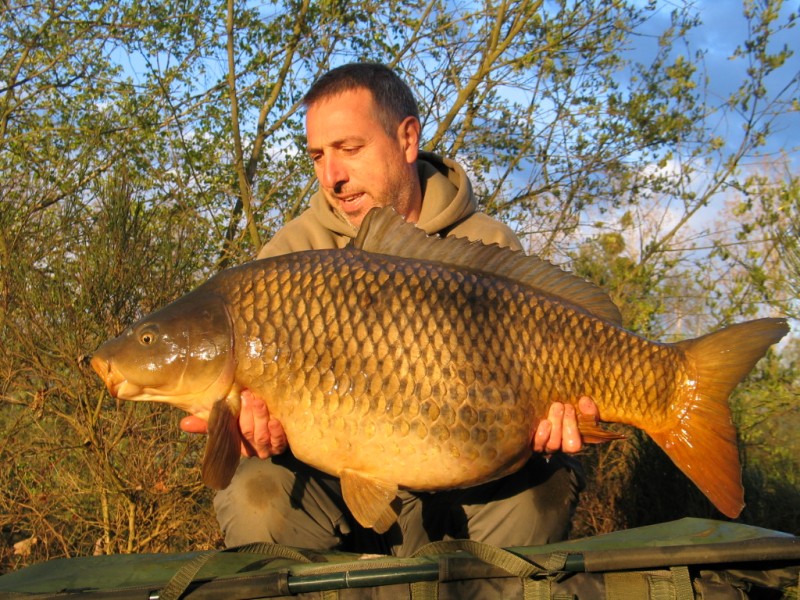
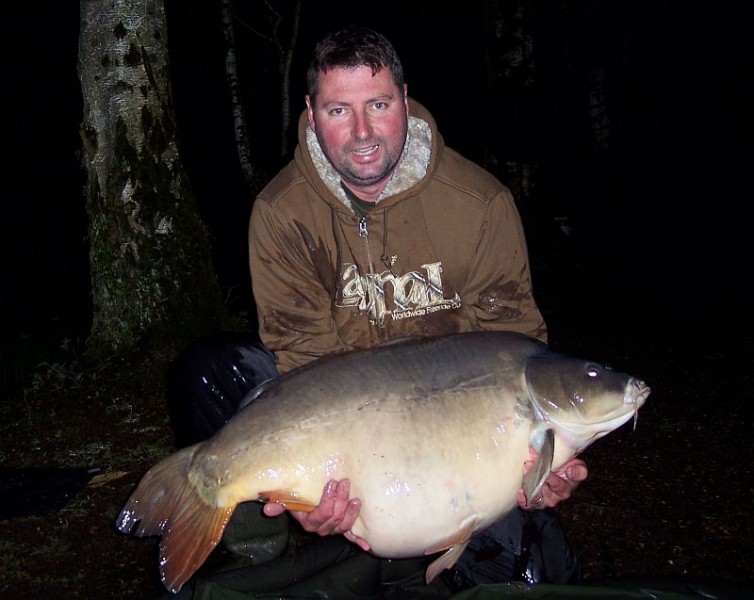
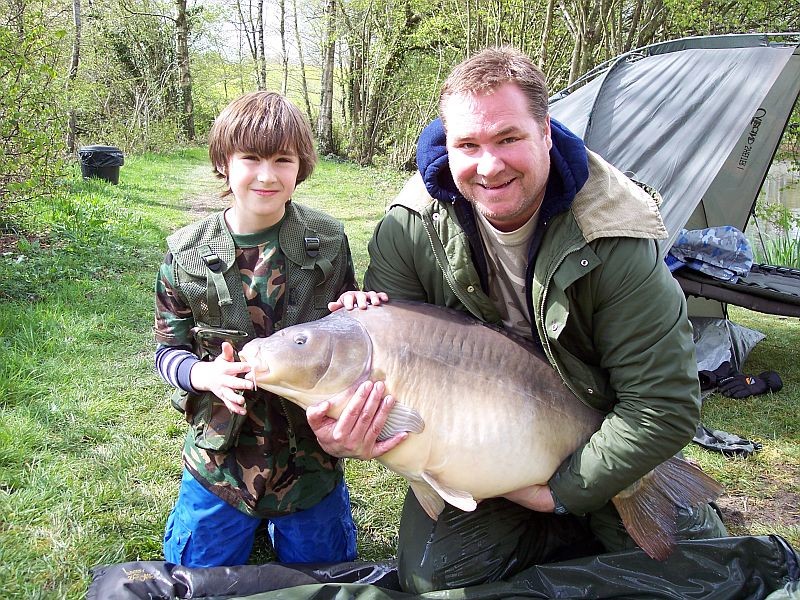
 Meet Cynthia! She’s a Sussex laying hen, apondeuse, and we bought at Boussac market this morning. She’ll spend a few days in a pen to get used to her new surroundings, and then we’ll let her range free with Madge and Limpy.
Meet Cynthia! She’s a Sussex laying hen, apondeuse, and we bought at Boussac market this morning. She’ll spend a few days in a pen to get used to her new surroundings, and then we’ll let her range free with Madge and Limpy.
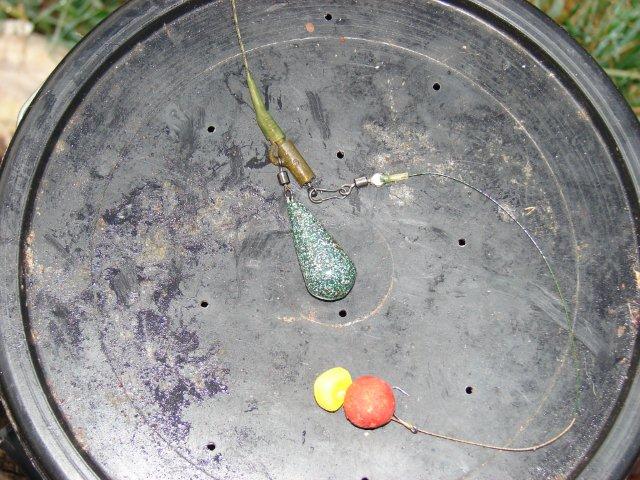

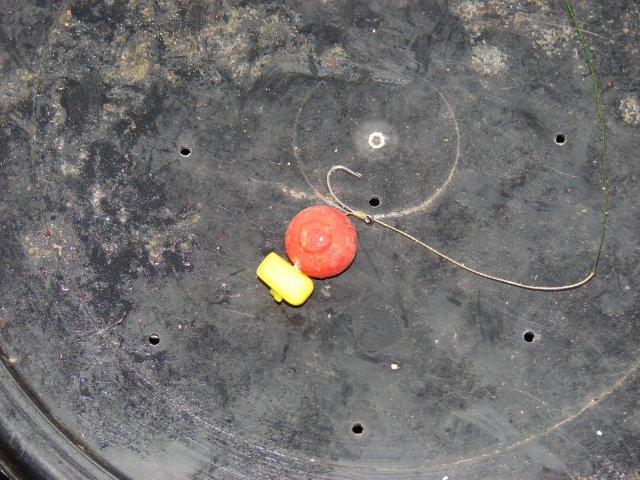
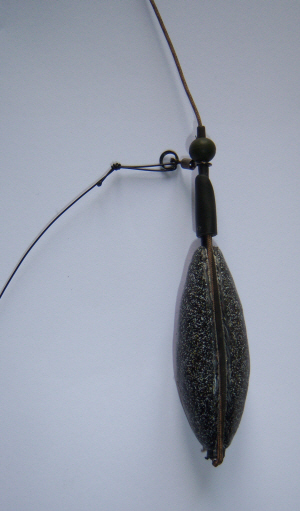
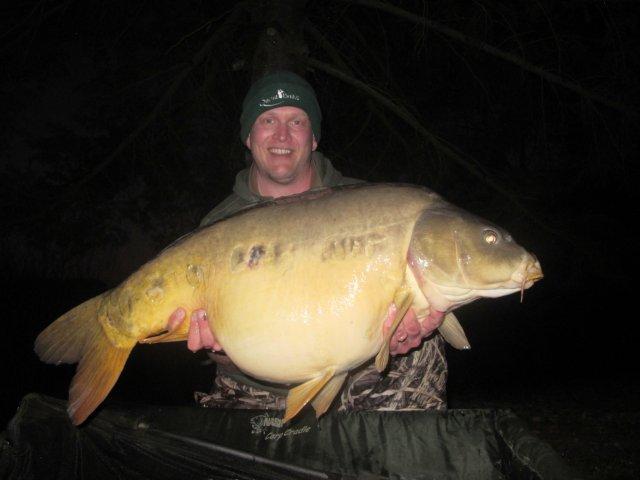
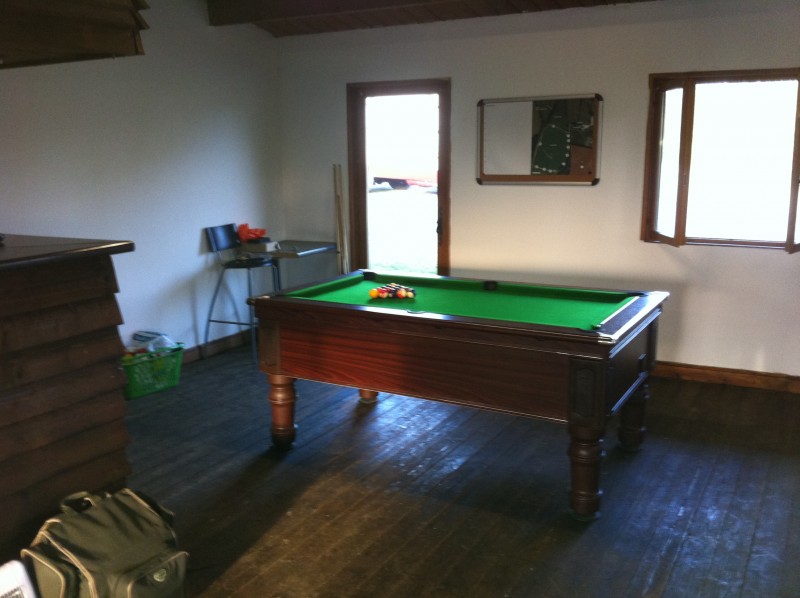
 For the past 2 months we’ve been busy refurbishing all the swims here at
For the past 2 months we’ve been busy refurbishing all the swims here at First of all we began by selecting large straight trees to cut down for the new fronts. We felled 4 large ash tree and lengths of up to 7 meters were cut for the fronts. The next job was to get the cut lengths into the water so they could be towed by boat down the lake to their designated swim. This was no mean feat as they were extremely heavy!
First of all we began by selecting large straight trees to cut down for the new fronts. We felled 4 large ash tree and lengths of up to 7 meters were cut for the fronts. The next job was to get the cut lengths into the water so they could be towed by boat down the lake to their designated swim. This was no mean feat as they were extremely heavy! It was a lot of back breaking work but in my eyes definitely worth the effort.
It was a lot of back breaking work but in my eyes definitely worth the effort.


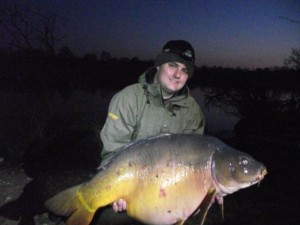
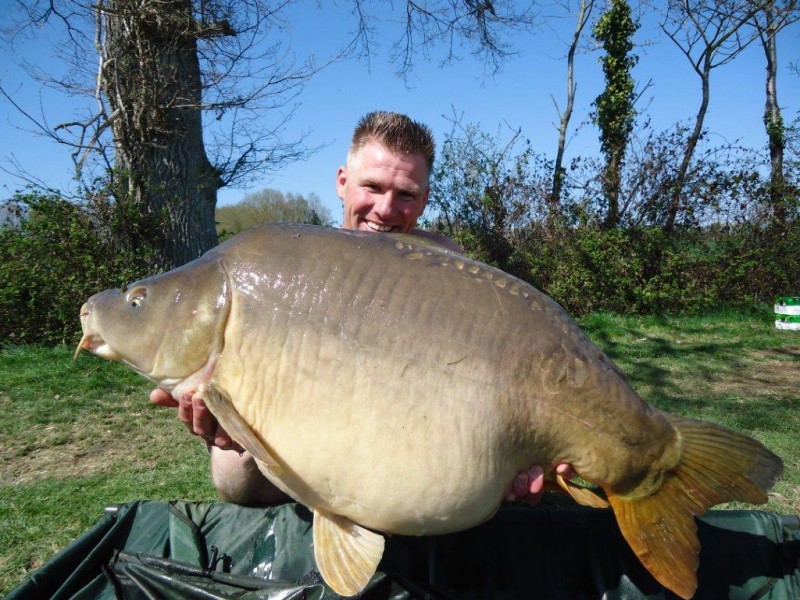
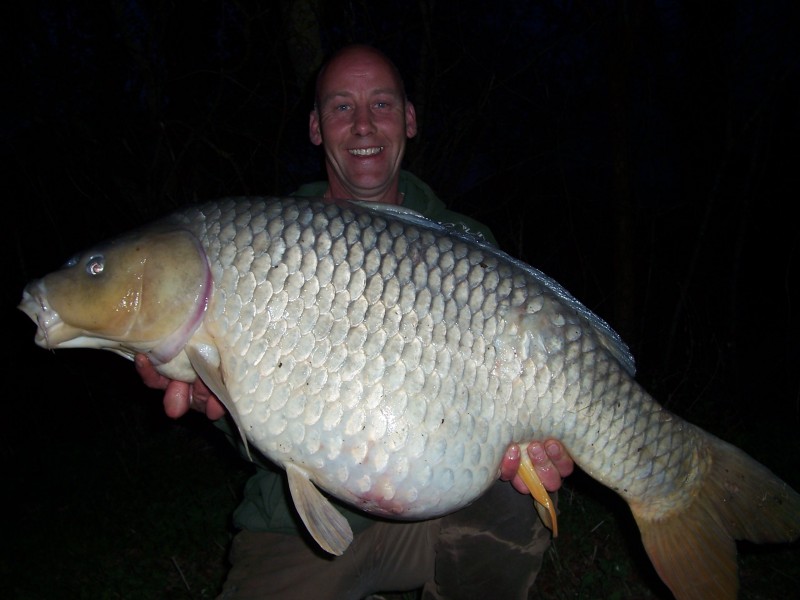

 For the first time since we opened we have had no visitors booked here at
For the first time since we opened we have had no visitors booked here at  Not to be outdone Lesley has started to build a dry wall that we kept saying we would do. It’s not easy as it’s got to match the rest of the walls by our decking area and to keep it looking old like the rest there is no cement to be used.
Not to be outdone Lesley has started to build a dry wall that we kept saying we would do. It’s not easy as it’s got to match the rest of the walls by our decking area and to keep it looking old like the rest there is no cement to be used.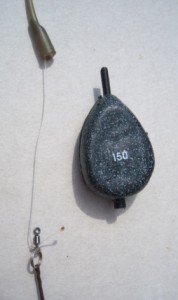
 In my opinion when carp fishing, the most important factor after the hook is the lead set-up. I very much favour a heavy lead… & here are the reasons why;
In my opinion when carp fishing, the most important factor after the hook is the lead set-up. I very much favour a heavy lead… & here are the reasons why; A concept which is not always appreciated by many anglers is that takes from the far bank can come backwards towards the angler, a “drop back”, which can result in their mainline snagging on any obstruction on the bottom. Although this may set the hook, if it does and the mainline is snagged, the angler is often cut off. If the swingers are slack, the carp may move a considerable distance from the far bank and will, at some point, find some obstruction on the bottom on which to lose the hook. Invariably light bobbins or swingers do not pick up backdrops and heavier swingers just move the leads. I’ve also noticed that bite alarms that do not have a roller system within them are very poor at picking up backdrops.
A concept which is not always appreciated by many anglers is that takes from the far bank can come backwards towards the angler, a “drop back”, which can result in their mainline snagging on any obstruction on the bottom. Although this may set the hook, if it does and the mainline is snagged, the angler is often cut off. If the swingers are slack, the carp may move a considerable distance from the far bank and will, at some point, find some obstruction on the bottom on which to lose the hook. Invariably light bobbins or swingers do not pick up backdrops and heavier swingers just move the leads. I’ve also noticed that bite alarms that do not have a roller system within them are very poor at picking up backdrops.

